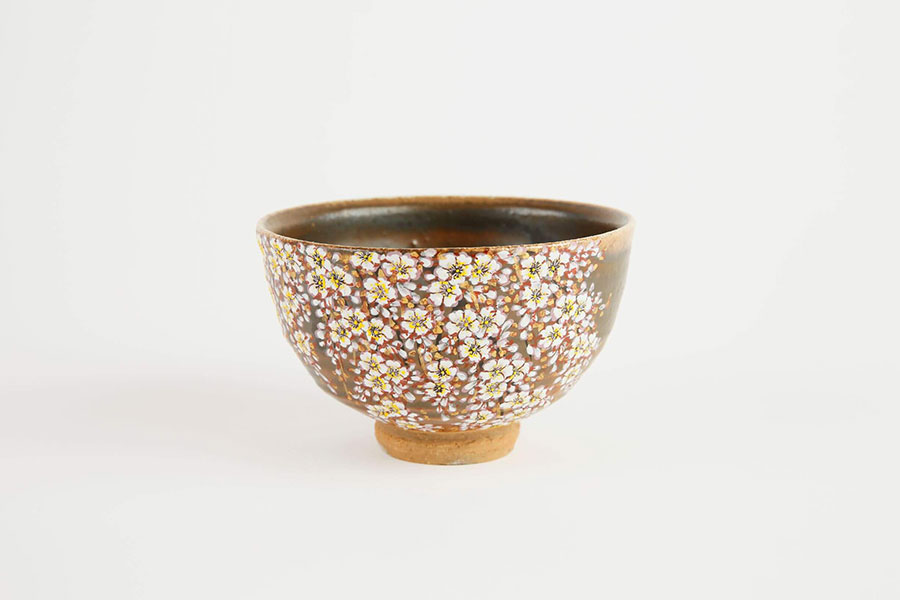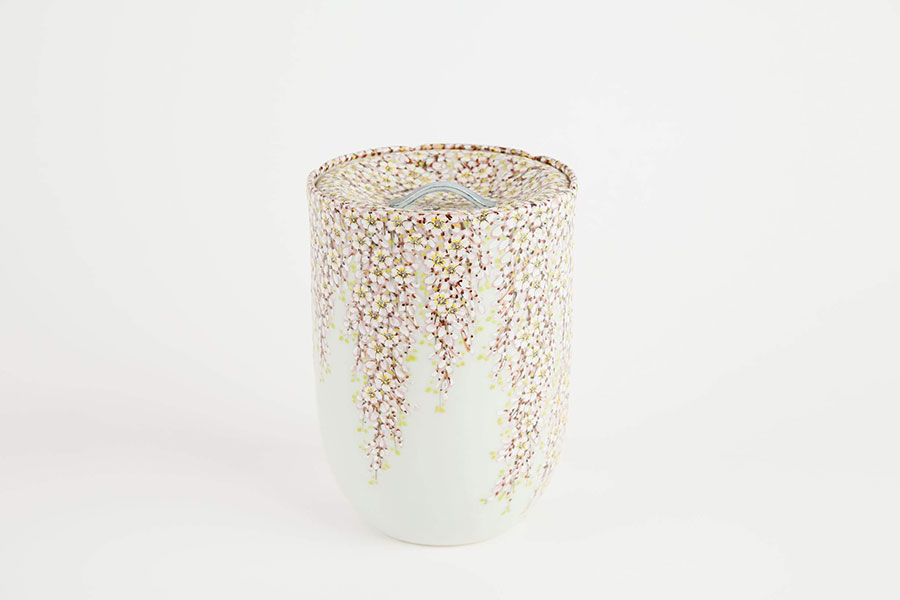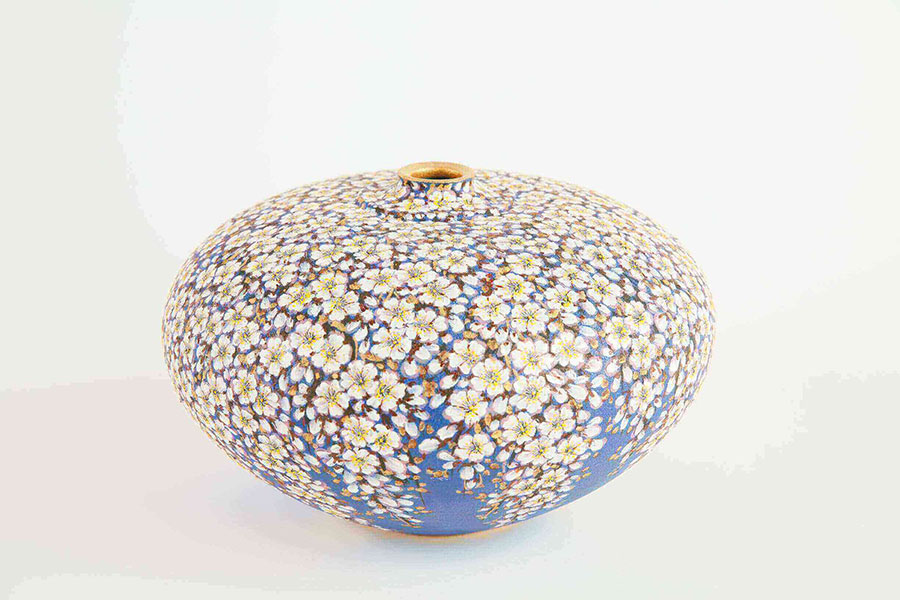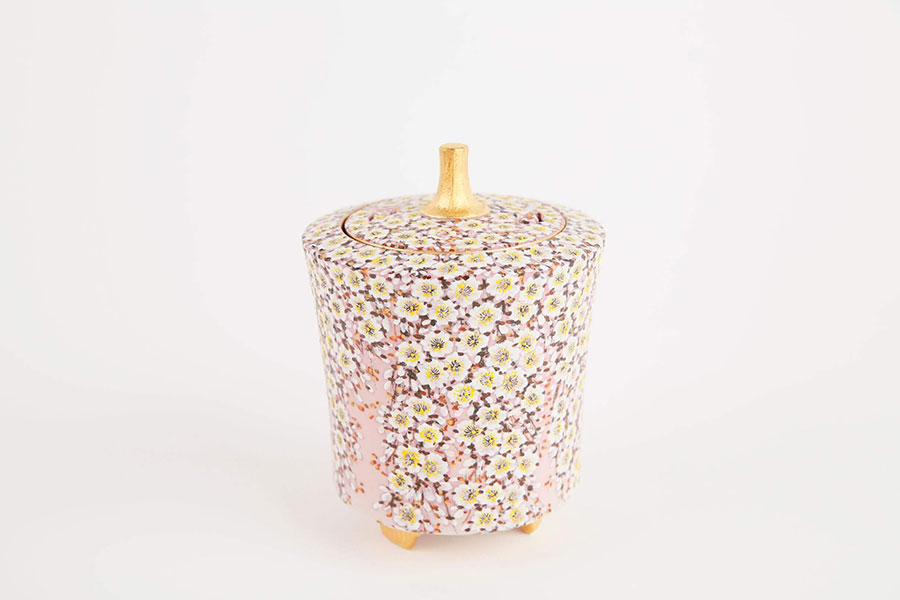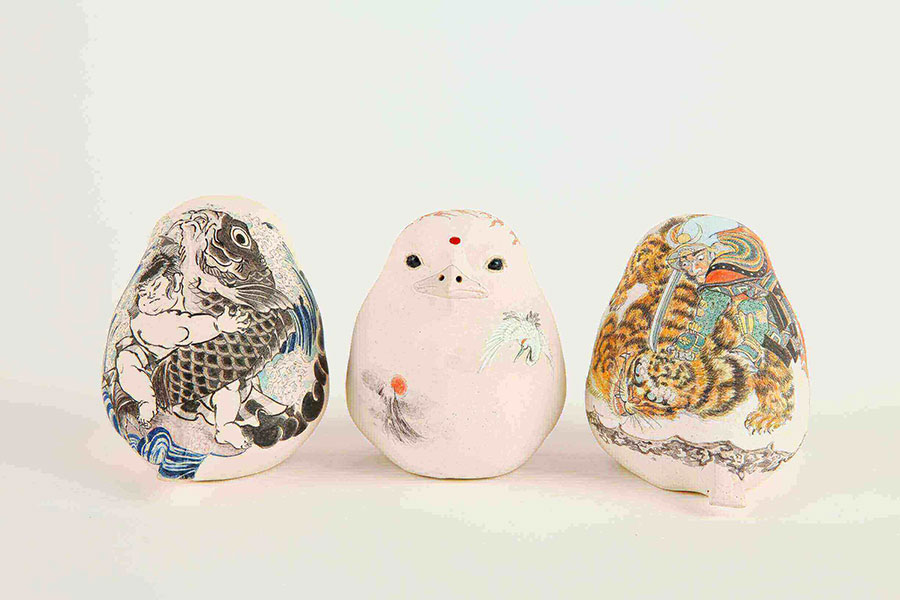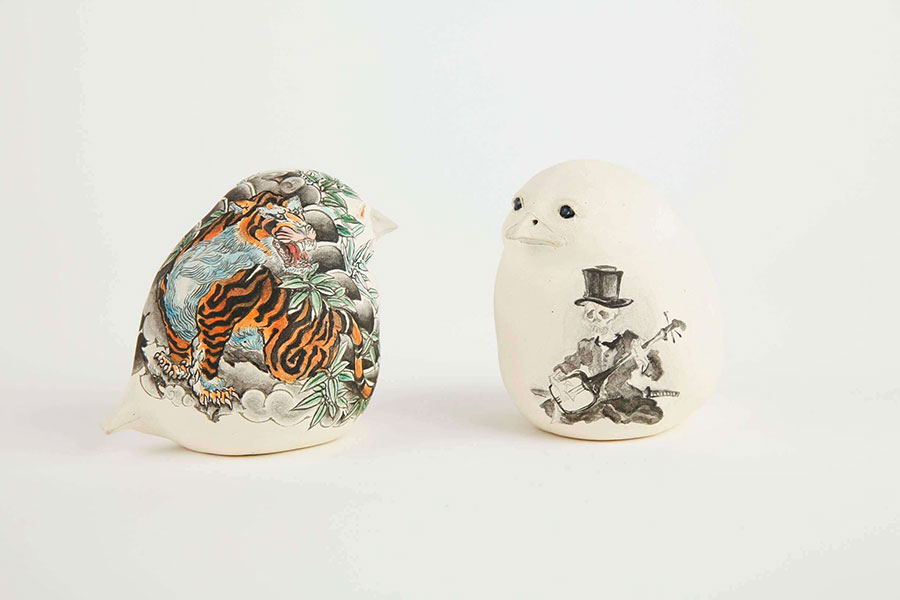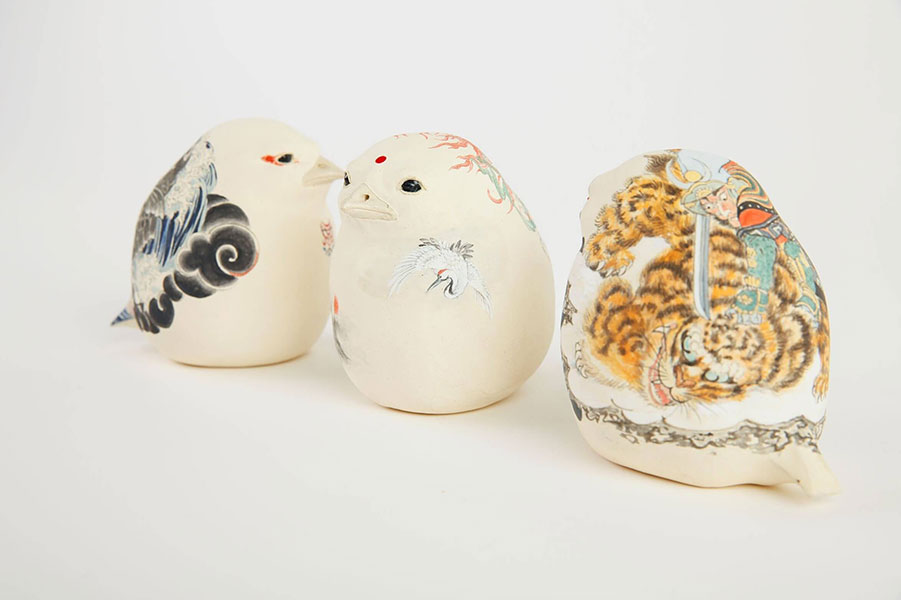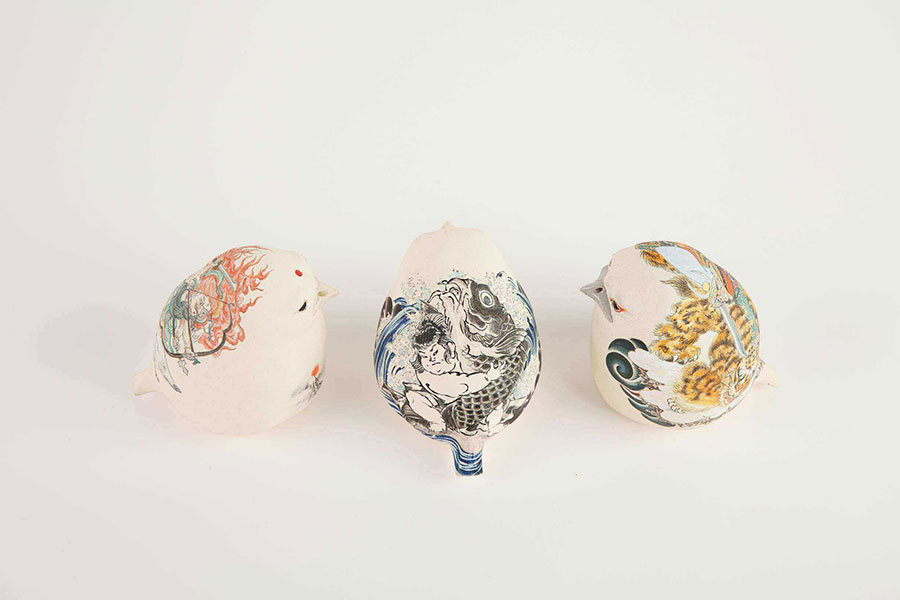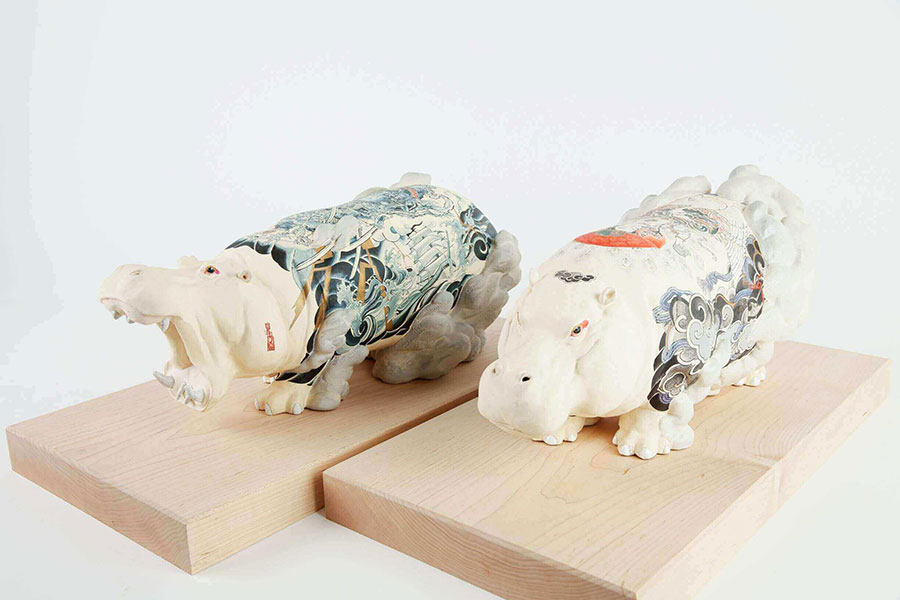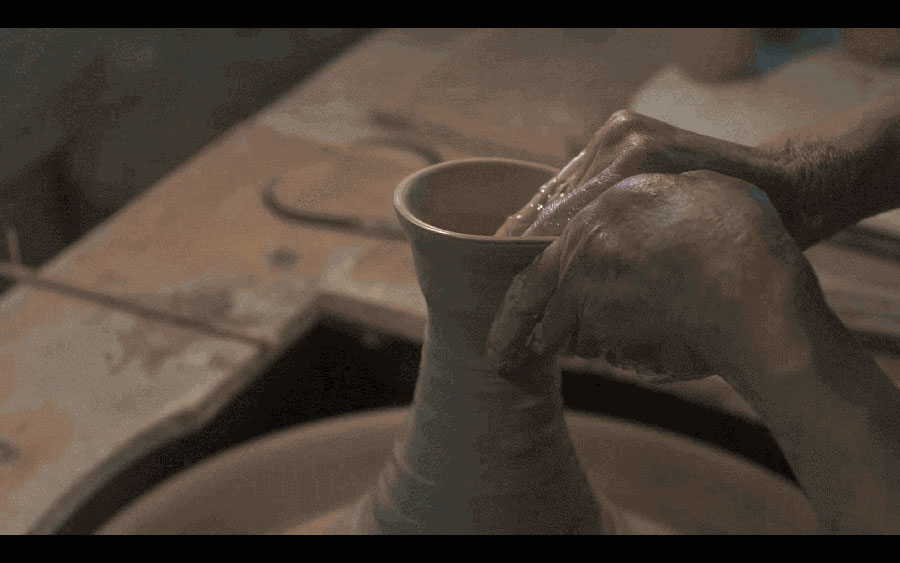
Shibukusa Ryuzo Pottery Inc. and tencolors
Hida pottery, known as Shibukusa-yaki (Shibukusa ware), originated in 1841 when the potter Ryuzo Toda, from Seto in the Owari region (now Aichi prefecture), was invited by the regional magistrate to open a kiln in the Shibukusa area, celebrated for its excellent potters’ clay. Near the end of the Edo period (in the 1860s), a painter from Kaga (in neighboring Ishikawa prefecture) began painting Shibukusa ware in the regional Kutani style, incorporating bold landscapes and designs influenced by nature. Shibukusa-yaki gained in reputation and was often referred to as Hida Kutani and Hida Akae(“Hida paintings in red”).
After a brief decline in popularity, Hida pottery benefitted from the modernization that came with the opening of Japan to international trade during the Meiji era (1868~). This spurred a revitalization of culture and craft by the wealthy townspeople of the Hida Takayama region and Shibukusa-yaki once again became a sought-after craft.
The Shibukusa Ryuzo kiln, now in its seventh generation, is one of the oldest potteries in Hida, and has continued to seek new and modern Shibukusa-yaki designs. Today the sixth and seventh generations work together. Shibukusa Ryuzo VII launched the brand 4293 (read SHI-BU-KU-SA, relating to the phonetic pronunciation of the numbers in Japanese), and he is currently working as the art director for the kiln, aiming to create a new style of Shibukusa-yaki while redefining the value of traditional crafts in a contemporary lifestyle. He has collaborated with artists from a variety of fields, such as apparel design and music, presenting his work in Milan and across the globe. Each successive generation continues to develop their own style of Shibukusa-yaki at the Shibukusa Ryuzo kiln.
Works by Shibukusa Ryuzo VI
Shibukusa Ryuzo VI stresses that Shibukusa-yaki is creating its own style at each generation while preserving the tradition. He created his own painting technique as well as the ceramic glaze for his work in the cherry blossom series. His son, the seventh generation of Shibukusa Ryuzo, also created his unique style in his irezumi series. Generally, the pottery process forms a ceramic body into objects of the desired shape and heating them to high temperatures (850 °C) in a kiln. The glaze is put as it adheres to the clay body and heating them again with 1200-1300 °C. After the glaze firing is complete, they are painted and fired again at a lower temperature of 700-800 °C. Shibukusa Ryuzo VII created the new technique, and it does not require multiple heating. He produced the own ceramic glaze, and his paints are soaked into the clay body. He describes this is similar to the tattoo coloring technique and presented the name irezumi series (tattoo series). In Japan, the tattoo symbolized power, courage, and bravery and he wanted his artworks to have the similar meaning. He carefully selected the historical figures and folklore figures in this works.
Works by Shibukusa Ryuzo VII
Related Articles
TAKUMI | The Arts and Crafts of Hida Takayama
Spotlight on Traditional Craft of Japan
Special Thanks
JAPAN HOUSE Los Angeles would like to thank the City of Takayama for the opportunity to be able to share this unique collection of remarkable craft, TAKUMI-The Arts and Crafts of Hida Takayama, in concert with our exhibition HIDA | A Woodwork Tradition in the Making. This exhibition from Hida Takayama is traveling to Denver later this year to mark the sixtieth anniversary of the sister city relationship between Takayama and Denver.


